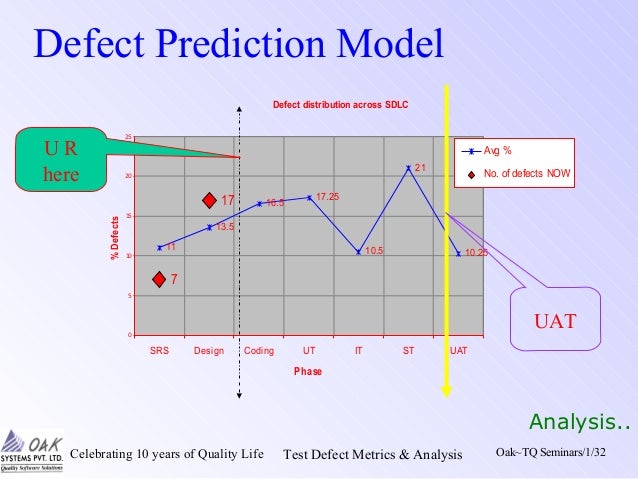What is Software Testing Metrics? Software testing metrics provide quantitative approach to measure the quality and effectiveness of the software development and testing process. It helps the team to keep a track on the software quality at every stage in the software development cycle and also. Beginning with your bug list, learn root cause analysis, defect resolution, and how to plan and implement a meaningful metrics practice. Explore the successes and failures of the metrics process and see how to move from the concept of metrics to measurement becoming a valued part of your project and test planning activities. Defect Density: Another important software testing metrics, defect density helps the team in determining the total number of defects found in a software during a specific period of time- operation or development. The results are then divided by the size of that particular module, which allows the team to decide whether the software is ready for.
| Software development |
|---|
| Core activities |
| Paradigms and models |
| Methodologies and frameworks |
| Supporting disciplines |
| Practices |
| Tools |
| Standards and Bodies of Knowledge |
| Glossaries |
A software metric is a standard of measure of a degree to which a software system or process possesses some property. Even if a metric is not a measurement (metrics are functions, while measurements are the numbers obtained by the application of metrics), often the two terms are used as synonyms. Since quantitative measurements are essential in all sciences, there is a continuous effort by computer science practitioners and theoreticians to bring similar approaches to software development. The goal is obtaining objective, reproducible and quantifiable measurements, which may have numerous valuable applications in schedule and budget planning, cost estimation, quality assurance, testing, software debugging, software performance optimization, and optimal personnel task assignments.

Software Defect Metrics
Common software measurements[edit]
Common software measurements include:
- Bugs per line of code
- Comment density[1]
- Cyclomatic complexity (McCabe's complexity)
- Defect density - defects found in a component
- Defect potential - expected number of defects in a particular component
- Defect removal rate
- DSQI (design structure quality index)
- Function Points and Automated Function Points, an Object Management Group standard[2]
Limitations[edit]
As software development is a complex process, with high variance on both methodologies and objectives, it is difficult to define or measure software qualities and quantities and to determine a valid and concurrent measurement metric, especially when making such a prediction prior to the detail design. Another source of difficulty and debate is in determining which metrics matter, and what they mean.[3][4]The practical utility of software measurements has therefore been limited to the following domains:
A specific measurement may target one or more of the above aspects, or the balance between them, for example as an indicator of team motivation or project performance.
Acceptance and public opinion[edit]
Some software development practitioners point out that simplistic measurements can cause more harm than good.[5] Others have noted that metrics have become an integral part of the software development process.[3]Impact of measurement on programmer psychology have raised concerns for harmful effects to performance due to stress, performance anxiety, and attempts to cheat the metrics, while others find it to have positive impact on developers value towards their own work, and prevent them being undervalued.Some argue that the definition of many measurement methodologies are imprecise, and consequently it is often unclear how tools for computing them arrive at a particular result,[6] while others argue that imperfect quantification is better than none (“You can’t control what you can't measure.”).[7]Evidence shows that software metrics are being widely used by government agencies, the US military, NASA,[8] IT consultants, academic institutions,[9] and commercial and academic development estimation software.
See also[edit]
References[edit]

- ^'Descriptive Information (DI) Metric Thresholds'. Land Software Engineering Centre. Archived from the original on 6 July 2011. Retrieved 19 October 2010.
- ^'OMG Adopts Automated Function Point Specification'. Omg.org. 2013-01-17. Retrieved 2013-05-19.
- ^ abBinstock, Andrew. 'Integration Watch: Using metrics effectively'. SD Times. BZ Media. Retrieved 19 October 2010.
- ^Kolawa, Adam. 'When, Why, and How: Code Analysis'. The Code Project. Retrieved 19 October 2010.
- ^Kaner, Dr. Cem, Software Engineer Metrics: What do they measure and how do we know?, CiteSeerX10.1.1.1.2542
- ^Lincke, Rüdiger; Lundberg, Jonas; Löwe, Welf (2008), 'Comparing software metrics tools'(PDF), International Symposium on Software Testing and Analysis 2008, pp. 131–142
- ^DeMarco, Tom. Controlling Software Projects: Management, Measurement and Estimation. ISBN0-13-171711-1.
- ^'NASA Metrics Planning and Reporting Working Group (MPARWG)'. Earthdata.nasa.gov. Archived from the original on 2011-10-22. Retrieved 2013-05-19.
- ^'USC Center for Systems and Software Engineering'. Sunset.usc.edu. Retrieved 2013-05-19.